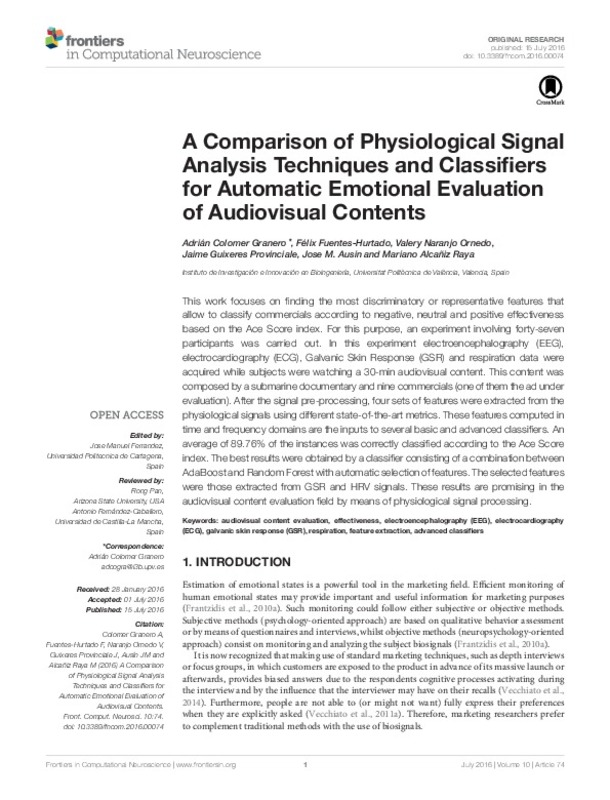JavaScript is disabled for your browser. Some features of this site may not work without it.
Buscar en RiuNet
Listar
Mi cuenta
Estadísticas
Ayuda RiuNet
Admin. UPV
A Comparison of Physiological Signal Analysis Techniques and Classifiers for Automatic Emotional Evaluation of Audiovisual Contents
Mostrar el registro completo del ítem
Colomer Granero, A.; Fuentes-Hurtado, FJ.; Naranjo Ornedo, V.; Guixeres Provinciale, J.; Ausin-Azofra, JM.; Alcañiz Raya, ML. (2016). A Comparison of Physiological Signal Analysis Techniques and Classifiers for Automatic Emotional Evaluation of Audiovisual Contents. Frontiers in Computational Neuroscience. 10(74):1-16. doi:10.3389/fncom.2016.00074
Por favor, use este identificador para citar o enlazar este ítem: http://hdl.handle.net/10251/83259
Ficheros en el ítem
Metadatos del ítem
| Título: | A Comparison of Physiological Signal Analysis Techniques and Classifiers for Automatic Emotional Evaluation of Audiovisual Contents | |
| Autor: | Fuentes-Hurtado, Félix José Ausin-Azofra, Jose Manuel | |
| Entidad UPV: |
|
|
| Fecha difusión: |
|
|
| Resumen: |
This work focuses on finding the most discriminatory or representative features that
allow to classify commercials according to negative, neutral and positive effectiveness
based on the Ace Score index. For this purpose, ...[+]
|
|
| Palabras clave: |
|
|
| Derechos de uso: | Reconocimiento (by) | |
| Fuente: |
|
|
| DOI: |
|
|
| Editorial: |
|
|
| Versión del editor: | http://dx.doi.org/10.3389/fncom.2016.00074 | |
| Descripción: |
|
|
| Agradecimientos: |
This work has been supported by the Heineken Endowed Chair in Neuromarketing at the Universitat Politecnica de Valencia in order to research and apply new technologies and neuroscience in communication, distribution and ...[+]
|
|
| Tipo: |
|









